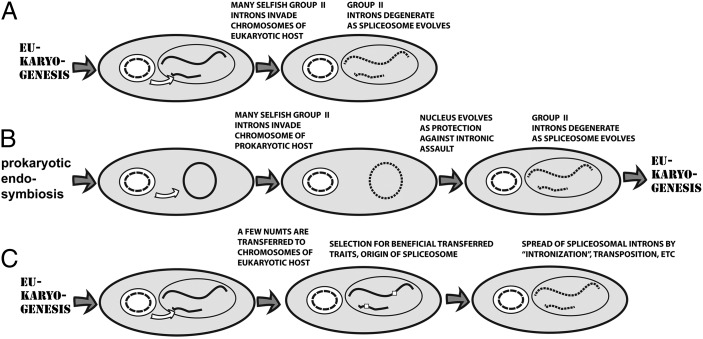Fig. 1.
Three schemes for the evolution of spliceosomal introns. (A) In a relatively advanced eukaryotic cell, selfish group II introns from newly established mitochondria invade the nuclear genome and proliferate there, then degenerate into spliceosomal introns (7). (B) Selfish group II introns from an endosymbiotic bacterium invade the genome of a host archaean and harmfully proliferate there, forcing the evolutionary separation of nucleus and cytoplasm and the evolution of spliceosomes, and giving rise to eukaryotic cells (13). (C) In a relatively advanced eukaryotic cell, group II introns embedded in a relatively few numts that carry genes whose transfer to the nuclear genome confers selective advantage are established, degenerate into spliceosomal introns and spread through neutral processes.

